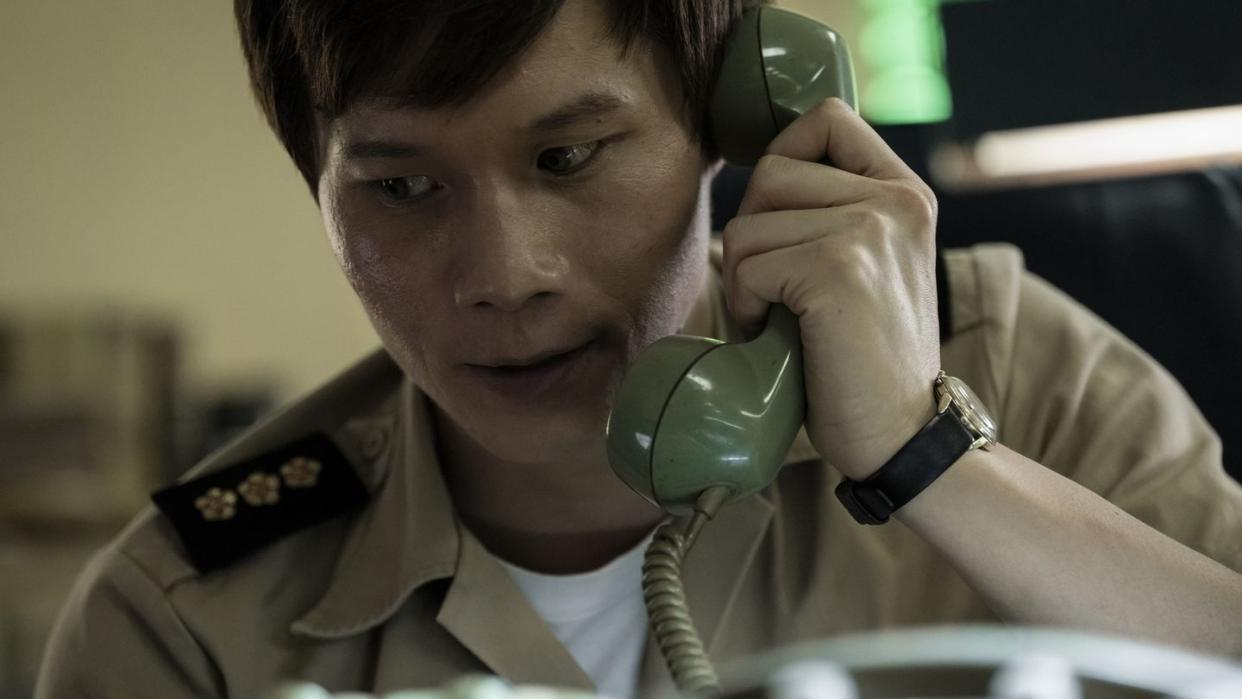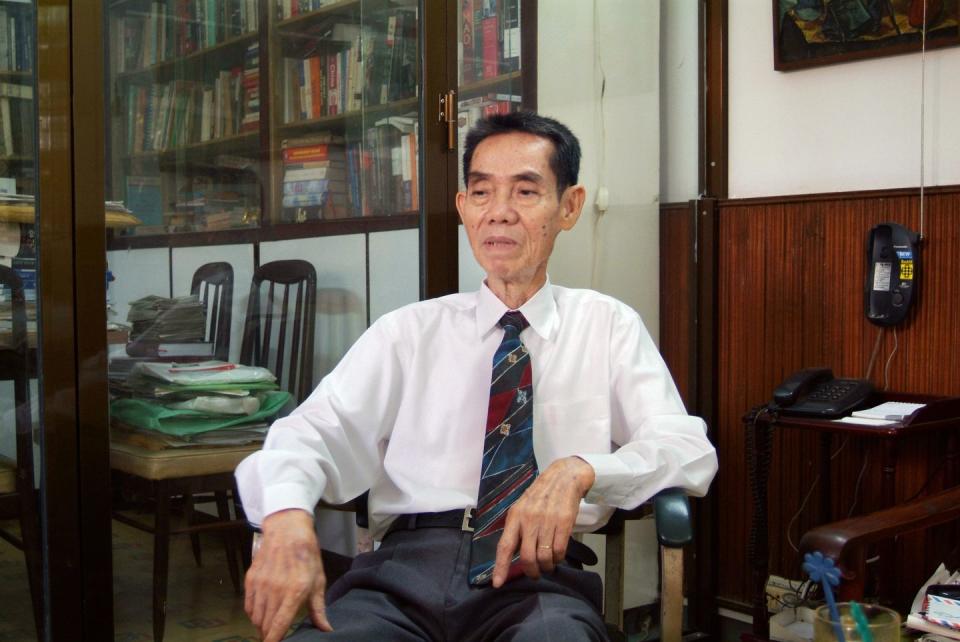Is ‘The Sympathizer’ Based on a True Story?

- Oops!Something went wrong.Please try again later.
"Hearst Magazines and Yahoo may earn commission or revenue on some items through these links."
A Vietnam War spy grapples with his new life as a refugee and the lingering perils of his profession in the upcoming espionage series The Sympathizer. The show follows the titular mole, a half-Vietnamese and half-French man known simply as the Captain, who works as a North Vietnamese spy with relationships on both sides during the war. When its conclusion forces him to relocate to the United States, the Captain must continue to maintain a dual life.
Based on Viet Thanh Nguyen’s Pulitzer Prize-winning 2015 novel of the same name, the seven-episode limited series began April 14 on HBO and its streaming service, Max. It stars Hoa Xuande as the Captain alongside Oscar winner Robert Downey Jr. and Emmy nominee Sandra Oh in supporting roles.
Although the Captain’s story in The Sympathizer series and Nguyen’s book is entirely fictional, it isn’t unlike that of real-life spies who had significant roles in the conflict.
Nguyen was partially inspired by North Vietnamese spy Pham Xuan An
In 2016, Nguyen discussed his inspiration for The Sympathizer with NPR, saying he made a spy novel because he liked the genre and thought it would make the story’s political themes more entertaining for readers. He also cited the story of Pham Xuan An, a staff writer for Time magazine during the Vietnam War who was also an intelligence officer for North Vietnam.
An was born in 1927, and according to the Los Angeles Times, he began serving as a platoon commander for the Viet Minh, a precursor to the Viet Cong forces, at age 17 amid the First Indochina War. Over the next few years, he also worked as a bookkeeper and an advisor to the American military mission to Vietnam.
Although officially a member of the Communist Party, An never fully aligned with its ideologies, and his primary objective was achieving Vietnamese independence. At the party’s request, he traveled to the United States to familiarize himself with American customs and attended undergraduate classes at Orange Coast College in California in the late 1950s. An grew to appreciate America and its free press and even showed promise as a journalist.
Now fluent in English, An returned to Vietnam in 1959 and reported on South Vietnamese politics before Time hired him as a war correspondent in 1965. Little did the publication and his colleagues know the information he shared was simultaneously going elsewhere.
An learned about spying from a book

An developed much of his espionage tactics on his own. According to the University of Nebraska-Lincoln, he gained a lot of his knowledge simply by reading a book an American classmate had given him called Anatomy of Spying.
An developed close relationships with many Western journalists on the front, knowing he could gain access to valuable information from press briefings. He wrote his reports to the Viet Cong in invisible ink and hid them in tins of biscuits or cigarette packs, which he passed off to his contact at the central market in Saigon, then the southern capital.
While relaying potentially vital military information to Communist officials, An didn’t seem to compromise his journalistic integrity. His biographers couldn’t find evidence he lied in his reporting for Time. “I don’t think he ever purposely gave us misinformation. That’s how he survived. He’d have been killed if he did,” said Roy Rowan, a former Time staff member.
Saigon, now known as Ho Chi Minh City, fell in April 1975—essentially ending the war. The Communist government promoted An to general and offered him a job in the censorship department, which he turned down.
By the 1980s, An’s covert behavior became public and surprised his colleagues. Still, many of them didn’t harbor malice toward him. “He was an intellectual, dog-lover, bird-lover, chain-smoker, super smart guy, and we thought a great reporter,” said Peter Ross Range, the former Saigon Bureau Chief for Time. “Everything was upside-down. So the fact that this turned out to be upside-down seemed like another one of the strange anomalies of the time.”
An died of emphysema at age 79 on September 20, 2006.
North Vietnam also had a female spy network
While he might be the most notable, An was hardly the only figure aiding the Communist cause in secrecy during the Vietnam conflict. Following the country’s division in July 1954, Dinh Thi Van established an all-female espionage ring in South Vietnam.
According to the University of Delaware, Van provided intelligence to the Viet Minh for years and even survived capture at the hands of the South Vietnamese government in 1959. She worked as an intelligence officer in the war’s later stages and was named a “Hero of the People’s Army.” She later worked in the Defense Ministry until her retirement.
According to Girl Museum, women did more than just share secrets for the Vietnamese resistance. They also smuggled weapons, dug trenches, and supplied food, water, and medical equipment.
The U.S. had its own spies throughout the war
The United States tried to counter with its own espionage efforts during the conflict, but these largely failed.
Author Sedgwick Tourison wrote in his 1995 book Secret Army, Secret War that the CIA began to parachute Vietnamese covert agents into North Vietnam in 1961. But within three years, officials believed those men had either been killed or captured or that the enemy had “turned” them and altered their alliances.
In December 1963, following a two-day visit to Vietnam, Defense Secretary Robert S. McNamara sent a memo to President Lyndon B. Johnson outlining a plan for “a wide variety of sabotage and psychological operations against North Vietnam.” This led the president to approve Operation Plan 34A and institute it in February 1964, paving the way for more agents to infiltrate North Vietnam.
As the conflict dragged on and escalated with the 1968 Tet Offensive, many American men chose to enlist as spies rather than await their fate in the draft. They became known as “spooks,” a reference to their hopefully invisible efforts to gather and share covert information.
Ultimately, these efforts did little to help the United States and were often sabotaged. Pham Chuyen, a double agent initially recruited by the CIA in 1961, is believed to have aided in the capture or death of scores of U.S.-controlled spies, according to Newsweek.
More than 58,000 American troops ultimately died in the conflict. An offered his own blunt assessment of the bloodshed in 2001. “The big mistake the Americans made was not understanding the Vietnamese history, culture, mentality. They were so sure military strength would win the war, they never bothered to learn who they were fighting,” he said.
Watch The Sympathizer on HBO and Max
To prepare for The Sympathizer and fully grasp the complexities of its storytelling, actor Ho Xuande read and analyzed Nguyen’s book after his audition and went through a “two-week crash course” in the Vietnamese language. “I tried to get an overall perspective about everybody involved, especially the Vietnamese people, because their stories aren’t always told when it comes to the conflict,” he told Vanity Fair. “And I heard stories from my parents from when they were growing up, about things that they witnessed, encountered—and had to escape from as well.”
Watch Xuande’s performance as the Captain in The Sympathizer. The seven-episode limited series, rated TV-MA, began April 14. New episodes air Sundays at 9 p.m. ET through May 26 on HBO and stream on Max.
The series also stars Robert Downey Jr. in four roles, including the Captain’s CIA agent boss, and Sandra Oh as Sofia Mori.
You Might Also Like

